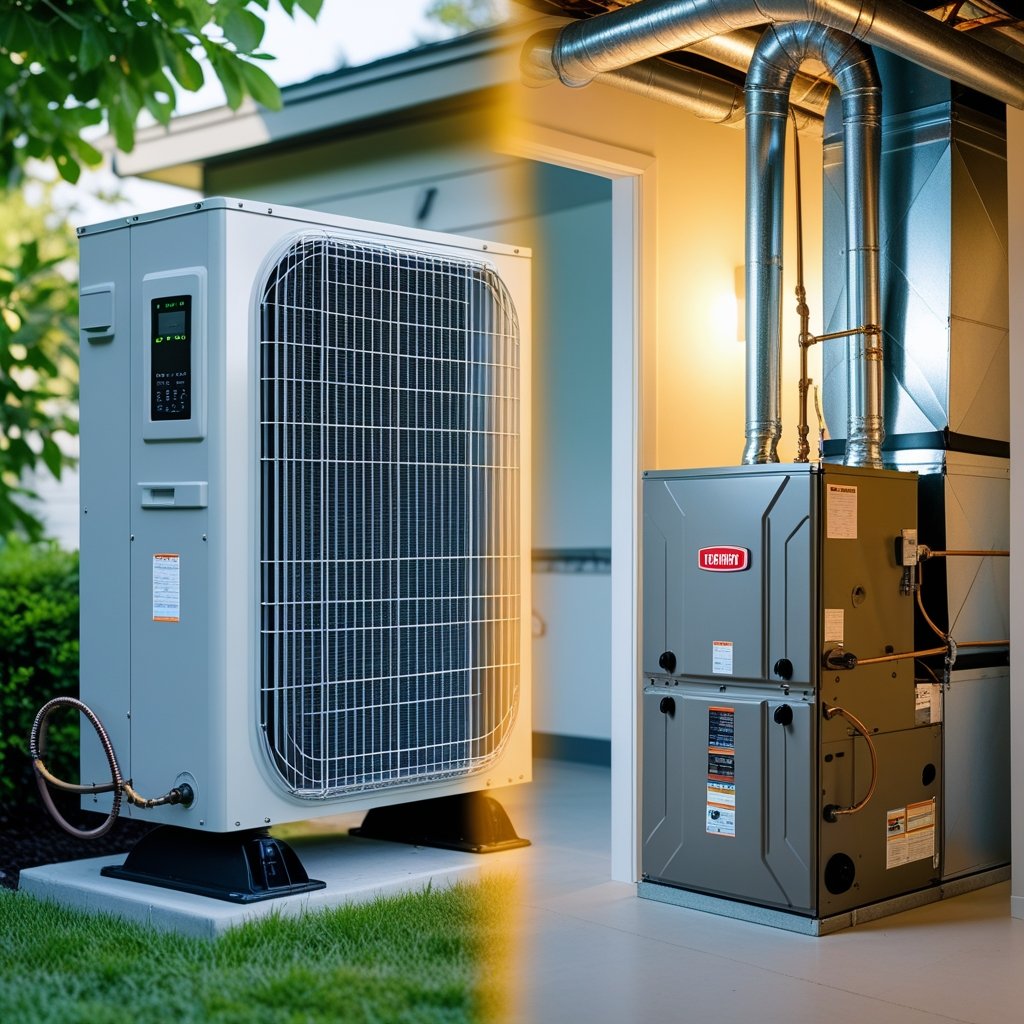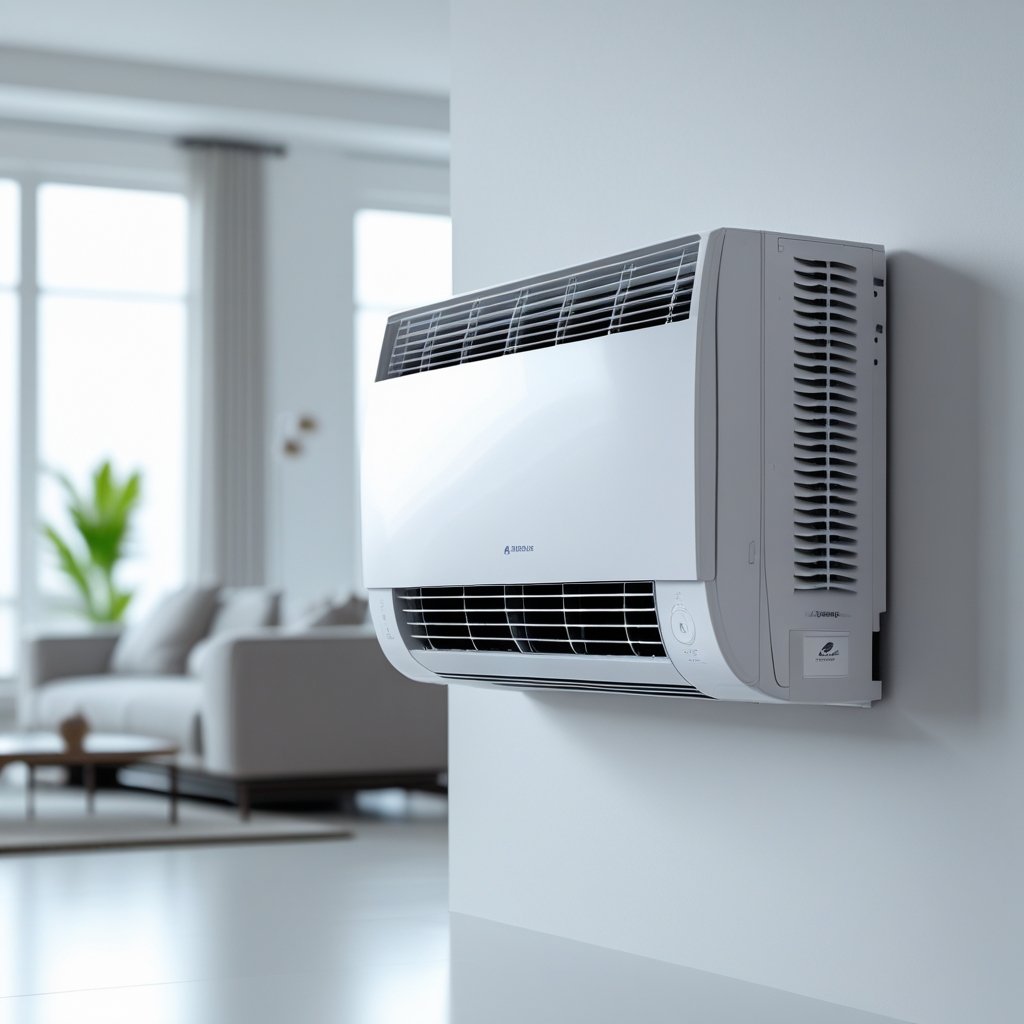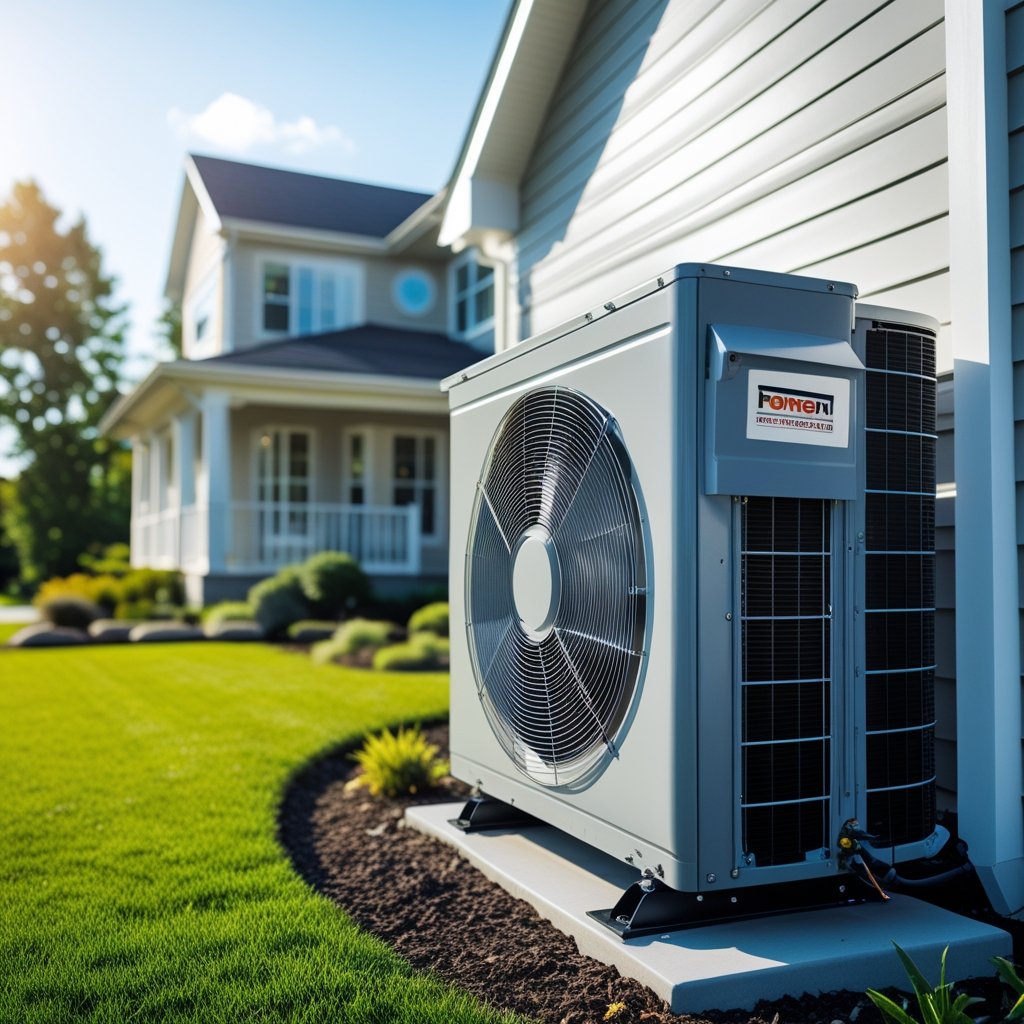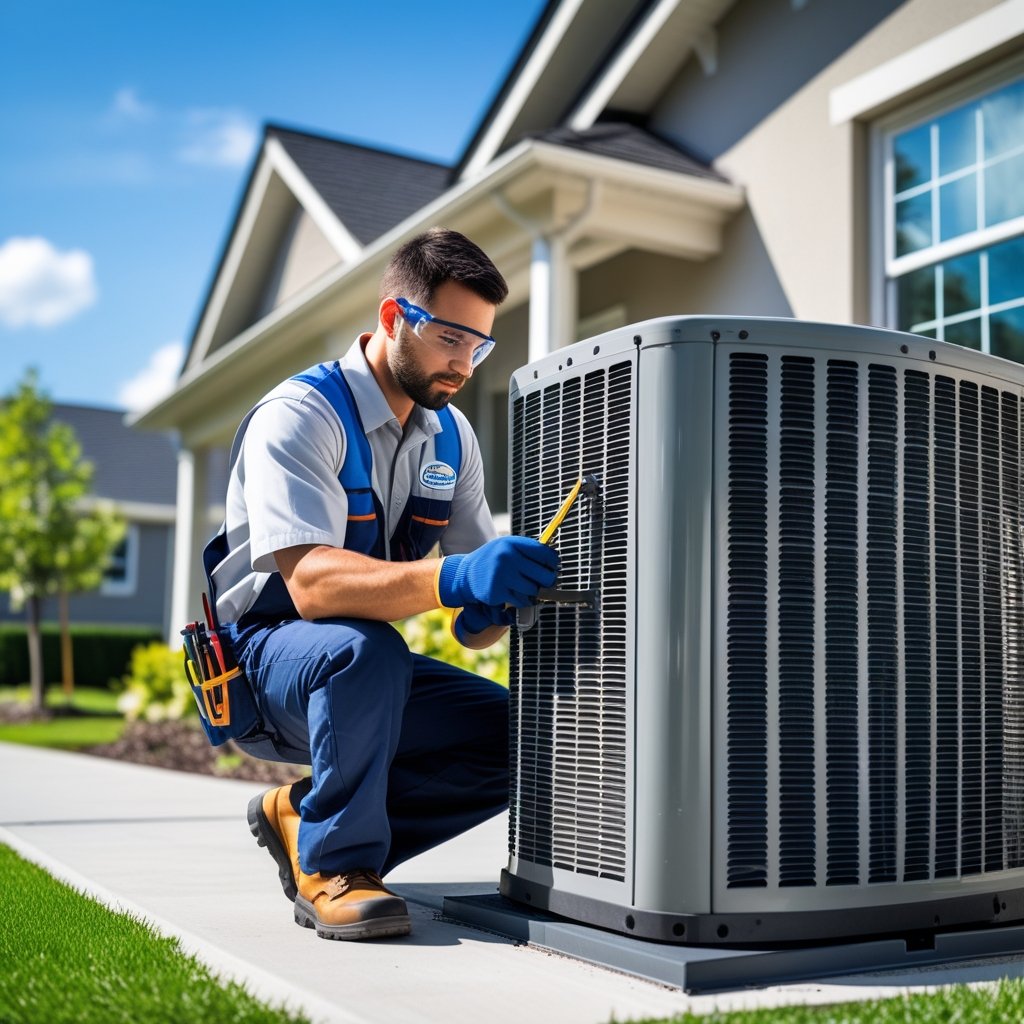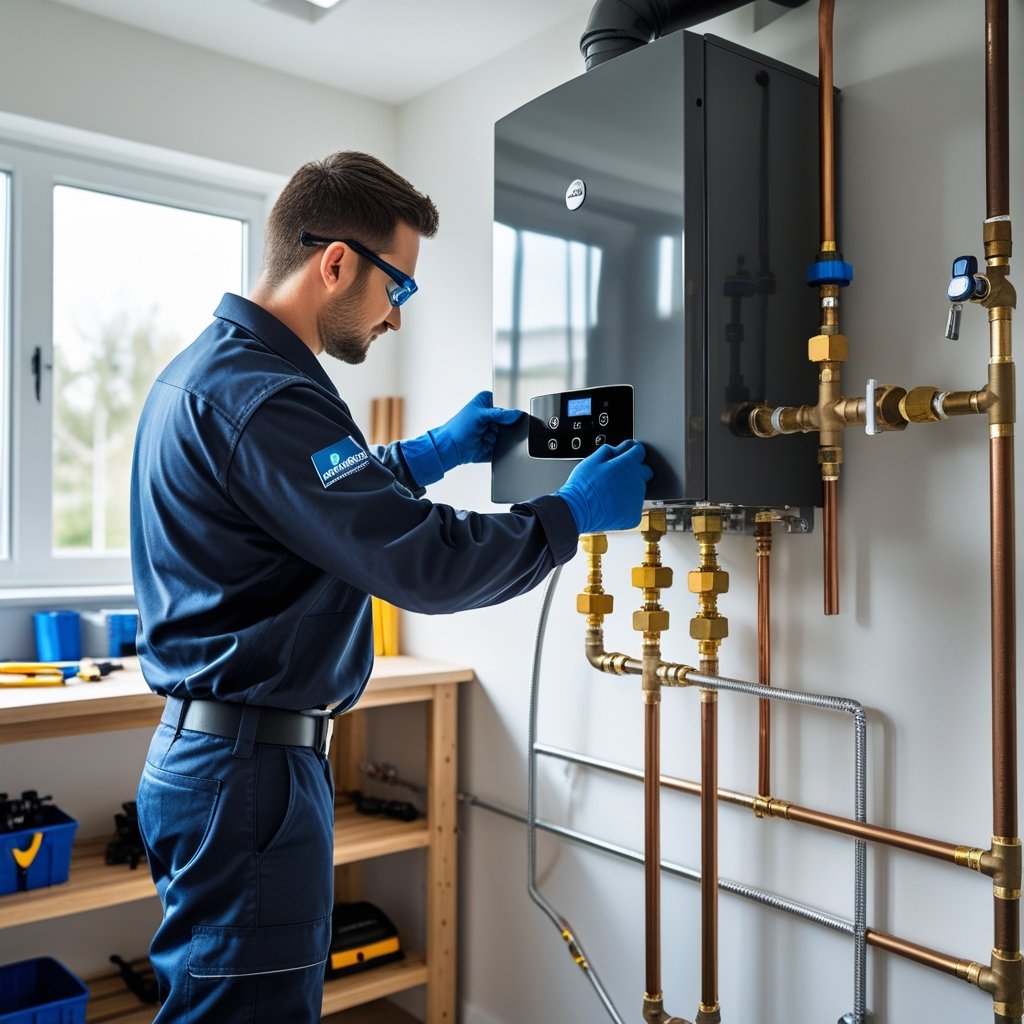Picking between a heat pump and a furnace really depends on what your home needs, your local weather, and how much you care about energy use. A heat pump can both heat and cool your home using electricity, which makes it a strong choice for energy savings in milder climates. Furnaces, by contrast, usually burn gas or oil and are the go-to for reliable heat when it gets frigid.
If you’re in South Central Pennsylvania—Elizabethtown, Lancaster County, York—both systems have their ups and downs. At Leo Kob Co., we help folks figure out what works best for their comfort and their budget, whether that means a new heat pump or keeping an old oil furnace running. It’s worth understanding these differences before you make a call.
How Heat Pumps Work
Heat pumps don’t make heat—they move it. Even when it’s chilly outside, they can grab heat from the air and bring it inside. Unlike a furnace, which burns fuel or uses electric resistance to make heat, a heat pump just transfers warmth.
Basic Operation of Heat Pumps
A heat pump uses refrigerant to move heat. In heating mode, it pulls warmth from the outdoor air and brings it inside. Flip it to cooling, and it does the opposite—takes heat from your home and dumps it outside.
You’ll have an outdoor unit and an indoor unit, linked by refrigerant lines. The compressor cycles the refrigerant between liquid and gas, grabbing and releasing heat along the way.
Because it just moves heat around, a heat pump often uses less energy than a furnace.
Types of Heat Pumps
You’ll run into three main types:
- Air-source heat pumps: Most common. They pull heat from the air outside.
- Ground-source (geothermal) heat pumps: Tap into the earth’s steady temperature with buried pipes. Super efficient, but the upfront price is higher.
- Mini-split heat pumps: Great for single rooms or additions, especially if you don’t have ducts.
Leo Kob Co. can help you pick the right setup in South Central PA, including mini-split installation around Lancaster and Elizabethtown.
Efficiency Ratings
Check for SEER (Seasonal Energy Efficiency Ratio) for cooling and HSPF (Heating Seasonal Performance Factor) for heat.
Here’s what you’ll usually see:
Efficiency RatingDescription SEER 14+Decent cooling efficiencyHSPF 8+Decent heating efficiencySEER 16+ / HSPF 10+High-efficiency; can qualify for rebates
Higher ratings mean less money wasted on energy and better performance, even when South Central Pennsylvania gets hit with a cold snap. Some heat pumps also qualify for rebates, which is always nice.
Don’t forget, a little routine maintenance goes a long way toward keeping your system humming along.
How Furnaces Work
Furnaces heat up air and push it through your house with ducts. There are a few different kinds, and they run on several fuels. Knowing how they tick helps you pick the right one and keep it running well.
Basic Operation of Furnaces
A furnace heats air by burning fuel or using electricity. The hot air gets blown through ducts into your rooms. Once it cools off, it cycles back to the furnace to get reheated.
A thermostat tells the furnace when to kick on or off, keeping your place at the temperature you want. Furnaces have safety features like limit switches to prevent overheating—nobody wants a fire hazard.
Common Types of Furnaces
You’ll mostly see three types: single-stage, two-stage, and modulating.
- Single-stage: Runs full blast or not at all.
- Two-stage: Can run on low or high, so you get more even heat.
- Modulating: Adjusts in tiny steps for smoother comfort and better efficiency.
Picking the right one can really change how cozy your place feels in the winter.
Fuel Sources
Furnaces can run on:
- Natural Gas – Most common in South Central PA. Cheap and efficient.
- Oil – For spots without gas lines; oil furnaces need more space and regular upkeep.
- Electric – Not as common. Usually pricier to run, but simple and clean.
- Propane – Handy in rural areas. Works a lot like natural gas but comes from a tank.
Leo Kob Co. keeps all types running in Elizabethtown, York, and Lancaster County. Picking the right fuel and staying on top of maintenance keeps your system safe and efficient.
Comparing Heat Pump vs Furnace: Key Differences
So, what’s really different? Heat pumps and furnaces don’t just heat differently—they need different setups, use energy in their own ways, and only one can cool your home.
Heating Performance in Cold Climates
Heat pumps move heat from outside in, but once it drops below about 25°F, they start to struggle. Sometimes you’ll need a backup heater to get through those deep-freeze nights in South Central Pennsylvania. Furnaces, on the other hand, make their own heat by burning fuel or using electric coils, so they keep pumping out warmth no matter how cold it gets.
If you’re in Elizabethtown or York and winter gets nasty, a furnace is probably the more dependable bet. Heat pumps do fine on milder days but can lag behind when it’s really bitter out.
Installation Requirements
Heat pumps need an outdoor unit and an indoor air handler. The install can get a little involved since it’s both heating and cooling in one. Furnaces are tucked inside and just need ducts to move air around.
If you’ve already got ducts, adding a furnace is usually pretty straightforward. Heat pumps can sometimes drop in where your AC used to be, as long as the ducts fit. Either way, you’ll want a pro to handle the setup—Leo Kob Co. can walk you through the options.
Energy Efficiency Comparison
Heat pumps tend to be more efficient than furnaces, since they just move heat instead of making it. That usually means lower electric bills, especially if winters aren’t too brutal. Gas or propane furnaces might be cheaper to run if fuel prices are low, but they burn more energy when it’s really cold.
A high-efficiency heat pump can snag you rebates or tax credits, which helps with the upfront sticker shock. Furnaces have more raw heating power but use more fuel in harsh weather. Either way, keeping your system tuned up saves money over time.
Cooling Capabilities
Heat pumps pull double duty—they cool your house by reversing their heating process, basically acting like an AC in summer. So, you only need one system for both. Furnaces? They don’t cool at all, so you’ll need a whole separate air conditioner.
If you want a single unit for year-round comfort, a heat pump makes sense. In places like Mount Joy or Hershey, where it gets hot, it’s handy to have cooling built in. With a furnace, you’ve got to budget for both heating and cooling gear.
Cost Considerations
When you’re weighing a heat pump against a furnace, you’ve got to look at upfront price, energy bills, and what you’ll spend on maintenance. All of these hit your comfort and your budget.
Upfront Installation Costs
Heat pumps usually cost more to put in. Around Lancaster County, you’re looking at $5,000–$10,000 for a full install. That covers the outdoor and indoor units. Furnaces are cheaper—think $3,000–$6,000—especially if the ductwork’s already there.
Need new ducts or electrical upgrades? Either system can get pricier fast. Leo Kob Co. gives folks in Elizabethtown and York a straightforward price—no gotchas.
Ongoing Energy Costs
Heat pumps use electricity to move heat, which makes them super efficient for places like South Central Pennsylvania. You might notice lower monthly bills, especially if you use it for both heating and cooling.
Furnaces burn natural gas, usually cheaper than electricity, but that depends on the market. During really cold winters, gas furnaces can be more affordable to run. Your actual bill depends on how big your house is, how good your insulation is, and if you keep your system in shape.
Maintenance Expenses
Furnaces need regular checkups—think burners, heat exchangers, filters. Expect $100–$200 a year for tune-ups. Skip it, and you’ll probably pay more for repairs.
Heat pumps need cleaning and refrigerant checks, too—maintenance runs about $150 a year. Since they heat and cool, you’re getting both services in one plan.
Leo Kob Co. has maintenance plans in Mount Joy and Hershey that help you avoid surprise costs and keep things running smooth.
Environmental Impact
It’s good to know how your heating system affects the environment. Let’s look at carbon footprint and renewable energy use—these really shape the impact of heat pumps and furnaces.
Carbon Footprint
Heat pumps usually leave a smaller carbon footprint than furnaces, since they use electricity to move heat instead of burning fuel. Fewer greenhouse gases, especially if your power comes from clean sources.
Furnaces that burn oil or gas release carbon dioxide into the air. In South Central PA, homes with gas or oil furnaces add more to air pollution and climate change than ones running heat pumps.
Quick comparison:
SystemCarbon Emissions Heat PumpLow, depends on electricity mixGas FurnaceModerate, burns fossil fuelOil FurnaceHigher, more CO2
If you want to shrink your home’s impact, a heat pump is usually the way to go. Leo Kob Co. can help you find a system that balances comfort and efficiency while cutting down your footprint.
Use of Renewable Energy
Heat pumps run on electricity, so if you’ve got solar panels or wind power, they can run almost emissions-free.
Furnaces can’t use renewables directly—they’re stuck with fossil fuels like gas or oil.
Pairing a heat pump with clean electricity can drop your bills and might even get you rebates in Lancaster and York. Leo Kob Co. often suggests heat pumps to customers who want to go greener without freezing in the winter.
Longevity and Maintenance Needs
Your heating system’s a big investment, so it’s smart to know how long it’ll last and how much care it’ll need. Here’s what you can expect from each type.
Typical Lifespan
Heat pumps usually last about 12 to 15 years if you take care of them. In places like Lancaster County or Hershey, where winters aren’t too harsh, they can reach the upper end of that range.
Furnaces—especially gas or oil models—tend to hang in there longer, often 15 to 20 years. They’re built tough for colder climates.
These numbers aren’t set in stone. Maintenance and your local weather make a difference. Regular checkups can stretch the life of your system, so companies like Leo Kob Co. offer inspection plans for homes in Elizabethtown and York.
Maintenance Frequency
Heat pumps should get checked out twice a year—once before it gets cold, once before it gets hot. Cleaning coils and checking refrigerant are musts.
Furnaces usually need a yearly inspection, best done before heating season. That means checking burners, filters, and vents. Filters might need a swap every 1–3 months, depending on how much you run the system.
Stay on top of maintenance, and you’ll dodge most big repairs. Leo Kob Co. offers service plans with priority scheduling and upfront pricing, so you’re not left guessing about costs.
Choosing the Right System for Your Home
Picking between a heat pump and a furnace comes down to where you live, your home's size and insulation, and what you expect from your heating. All these things shape how well the system works and what you'll pay to keep your house comfortable.
Climate Suitability
If you're in South Central Pennsylvania—think Elizabethtown or Lancaster County—you're dealing with cold winters and mild summers. A furnace works well in freezing weather since it makes its own heat by burning fuel or using electricity.
Heat pumps shine when winters aren't brutally cold. They move heat instead of making it, so they're super efficient in moderate cold, but not as great below freezing. Newer models can handle lower temps, though you might need backup heat when it gets really frigid.
How often does your area dip into the teens? In places like York or Hershey, a heat pump paired with a solid backup system (which Leo Kob Co. can set up and maintain) can help you cut energy bills.
Home Size and Insulation
Home size makes a difference. Large, drafty houses usually need a furnace for strong, steady heat. Furnaces push out warm air fast, which helps keep temps even in big spaces.
If your house is smaller and well-insulated, a heat pump could do the job. It gently transfers heat, but if your insulation is lacking, you'll lose efficiency.
Honestly, getting an energy audit is a smart move before you pick a system. Upgrading insulation and sealing up leaks helps both types of systems and can save you money in the long run.
Personal Preferences
Your own priorities—comfort, cost, maintenance—matter a lot. Furnaces heat up rooms quickly and feel warmer on those bitter mornings, which some folks love.
Heat pumps are quieter and handle both heating and cooling, so you can save space and maybe cut your summer AC bills. They usually cost less to run in this region, but the upfront price tag can be higher.
Maintenance is part of the deal either way. Furnaces need regular filter and vent cleaning. Heat pumps need seasonal checkups to stay efficient. Leo Kob Co. offers service plans if you'd rather not worry about it.
Upgrading or Switching Systems
Thinking about swapping out your system or upgrading? It's not always as simple as just replacing a box. Sometimes you'll need to upgrade your electrical panel and make sure all the parts play nicely together.
Replacement Considerations
Switching from a furnace to a heat pump, or just getting a newer system, means checking if your electrical system can handle it. Heat pumps often need their own circuits because they're a bit more high-tech. Leo Kob Co. can handle panel upgrades in Lancaster County and nearby.
Size and efficiency matter too. Heat pumps are great for milder winters and give you both heating and cooling. If your winters get harsh, you might need a hybrid setup or furnace backup. Definitely ask about rebates and energy savings—sometimes those help offset the initial cost.
Integration with Existing HVAC
Not swapping everything out? Integration is huge. A heat pump can work with your furnace to boost efficiency and comfort. This hybrid setup needs controls to switch between units, and Leo Kob Co. can set that up for you.
Check your ductwork, too. Sometimes it needs resizing or sealing to avoid wasting energy. Upgrading switches, outlets, or adding surge protection can help protect your investment. Reviewing your electrical connections during a heating or cooling upgrade makes the whole thing smoother.
Frequently Asked Questions
Choosing between a heat pump and a furnace means weighing cost, efficiency, climate, and maintenance. You might wonder about installation, upkeep, and how each handles cold snaps.
What are the initial installation costs for a heat pump compared to a furnace?
Heat pumps usually cost more upfront because they do double duty—heating and cooling. Furnaces, especially oil or gas, are cheaper to install but only heat your home.
Can you compare the pros and cons of heat pumps and furnaces?
Heat pumps use less energy since they move heat instead of making it. They can cool in summer and heat in winter, but in really cold weather, they might not keep up.
Furnaces deliver strong, reliable heat during the coldest months. They’re not always as efficient and can cost more to run, especially if you use oil or electric models.
How does a heat pump's efficiency change with outdoor temperatures?
Heat pumps work best in mild or moderate climates. As it gets colder outside, they have to work harder, so efficiency drops. That said, the latest models handle cold a lot better than older ones.
Is a heat pump more cost-effective than a furnace over time?
Generally, yes. Heat pumps usually cost less to run over the year because they use electricity efficiently. The energy savings can balance out the higher installation cost, especially in places like Elizabethtown or Lancaster County where winters aren’t too harsh.
What are the maintenance requirements for heat pumps versus furnaces?
Heat pumps need regular maintenance—keeping coils clean and refrigerant levels right. Furnaces need yearly checks on burners, filters, and vents.
Leo Kob Co. offers HVAC maintenance in South Central PA to help keep your system running smoothly and avoid surprise breakdowns.
How do heat pumps perform in extremely cold climates compared to furnaces?
Heat pumps can struggle a bit when temperatures drop way below freezing—they just don’t crank out as much heat as they do in milder weather and might need a little backup. Furnaces, especially the old-school oil ones you’ll find in places like York or Hershey, keep pumping out steady warmth even when it’s bitterly cold, no fuss.

